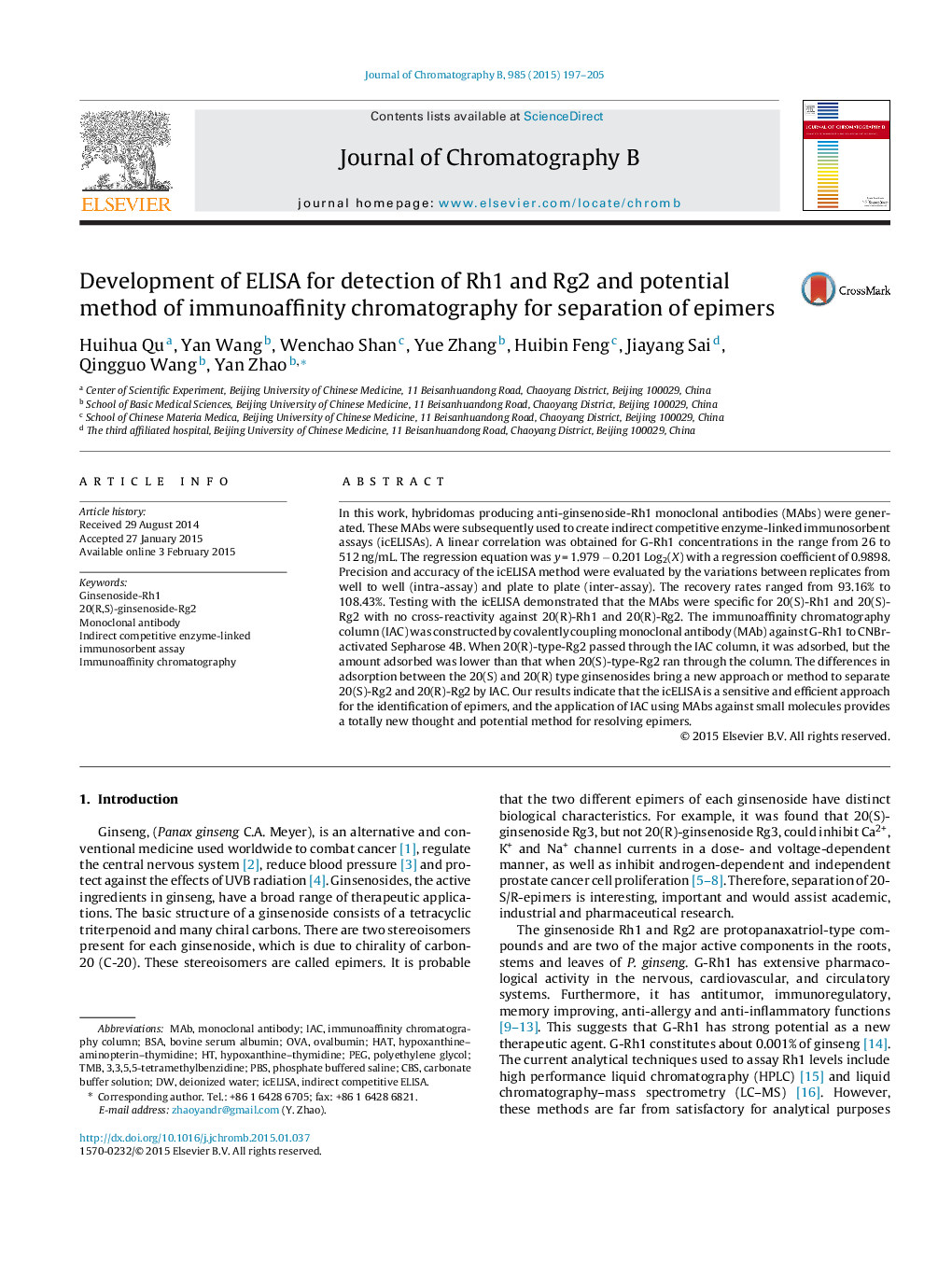| کد مقاله | کد نشریه | سال انتشار | مقاله انگلیسی | نسخه تمام متن |
|---|---|---|---|---|
| 1212206 | 1494062 | 2015 | 9 صفحه PDF | دانلود رایگان |

• Hybridomas producing anti-ginsenoside-Rh1 MAbs were generated.
• The anti-G-Rh1 MAbs were used to create icELISAs for identification of 20(S)-Rh1, Rg2.
• The IAC provides a new approach and potential method for resolving epimers.
In this work, hybridomas producing anti-ginsenoside-Rh1 monoclonal antibodies (MAbs) were generated. These MAbs were subsequently used to create indirect competitive enzyme-linked immunosorbent assays (icELISAs). A linear correlation was obtained for G-Rh1 concentrations in the range from 26 to 512 ng/mL. The regression equation was y = 1.979 − 0.201 Log2(X) with a regression coefficient of 0.9898. Precision and accuracy of the icELISA method were evaluated by the variations between replicates from well to well (intra-assay) and plate to plate (inter-assay). The recovery rates ranged from 93.16% to 108.43%. Testing with the icELISA demonstrated that the MAbs were specific for 20(S)-Rh1 and 20(S)-Rg2 with no cross-reactivity against 20(R)-Rh1 and 20(R)-Rg2. The immunoaffinity chromatography column (IAC) was constructed by covalently coupling monoclonal antibody (MAb) against G-Rh1 to CNBr-activated Sepharose 4B. When 20(R)-type-Rg2 passed through the IAC column, it was adsorbed, but the amount adsorbed was lower than that when 20(S)-type-Rg2 ran through the column. The differences in adsorption between the 20(S) and 20(R) type ginsenosides bring a new approach or method to separate 20(S)-Rg2 and 20(R)-Rg2 by IAC. Our results indicate that the icELISA is a sensitive and efficient approach for the identification of epimers, and the application of IAC using MAbs against small molecules provides a totally new thought and potential method for resolving epimers.
Journal: Journal of Chromatography B - Volume 985, 15 March 2015, Pages 197–205